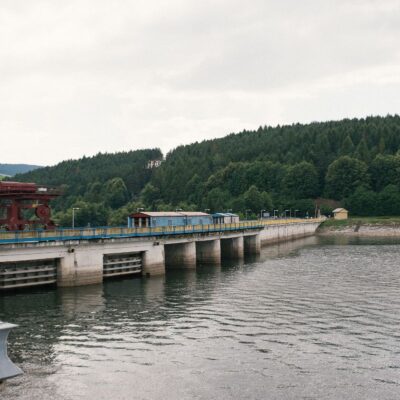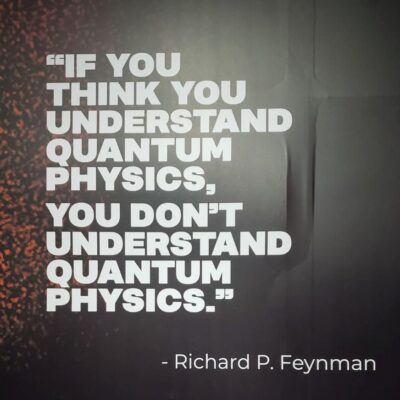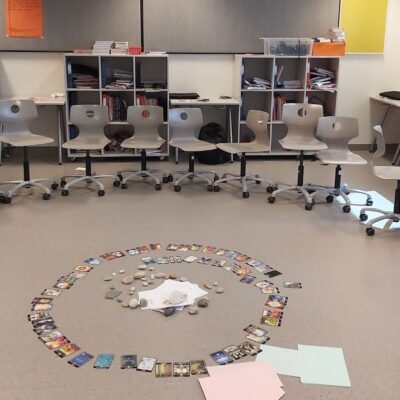
What happens when every new venture an organization takes on – every business initiative, every project, every new team formed – is taken on as a change process rather than looking at it from a project framework?
Most new ventures are approached from a project framework. They have a fixed start and end dates, clearly articulated outcomes, and resources committed to getting the job done. It can feel like its own entity, like an island floating on the globe that makes up the organization as a whole. And when this venture is complete, we’ll still be doing what we’re doing and likely turn our attention towards the next big project.
It sounds pretty normal, so you might be wondering “yep, that’s how it works, what’s the problem?”
The challenge with a project management framework is that so much gets left on the table when you call it complete, pack up, and walk away.
Looking through the lens of a change process
When working the Genuine Contact way, the approach to the project always assumes that change is constant. It’s one of the 5 underpinning beliefs of Genuine Contact:
We believe that change with its accompanying loss, grief work, and conflict is constant. Organizations that develop mastery in working with change can sustain optimal effectiveness. These leaders and organizations recognize that change cannot be managed, that energy spent trying to manage change is wasted energy, and that productive use of individual and organizational energy is achieved by working with change rather than against it.
Working with change means approaching every business initiative from a lens of change rather than from the lens of “how do we get this project accomplished”. You intentionally work with that change, rather than unintentionally be working against it simply by not recognizing that it’s there. When you work this way, you understand that in undertaking a project, in some way the organization is going to be different than it was before you began. When you start a project looking at it this way, you build in parts of the project management process as a change process to support the organization throughout the work and into the future.
What does that really mean?
It would take a small book to unpack all of what it means to approach project management as a change process. This approach is mostly a change in thinking. It is understanding that while a project has a definite start and end, the effects of that project are lasting inside the organization. You would still do all of the activities you know to do to successfully complete the project. You adjust your approach, the container the project sits within, to support the organization to transform from its existing state to its new state in the best way possible.
Start with the whole picture
Project management usually means setting a goal, assembling a team, mapping out how the work will get done, and getting started. In the Genuine Contact way of working, you start with a holistic picture. A picture of the project as a whole. This includes ensuring everyone who is involved in the project has a clear understanding of:
- Why is this project being undertaken?
- Who is the leader of this project? What leadership is expected or invited from those working on the project?
- What is the vision of the successful outcome of this project? How will the organization and its stakeholders benefit from this work?
- Who needs to be involved to achieve successful outcomes? This includes both those inside the organization as well as stakeholders and clients outside the organization.
- What method will be used to achieve successful outcomes? This includes developing an operational plan.
- How does this project relate to the rest of the work the organization does?
- What external factors need to be considered to support successful outcomes?
Starting with a whole picture and keeping it in everyone’s awareness is an important first step in project management as a change process. It’s likely that everything will not go entirely to plan while the project unfolds. Every step of the project means some amount of change. If that change takes the project off course, it’s much easier to see where it is getting off track and how to bring it back when you are looking at the whole picture rather than just the steps of a Gantt chart.
When the project is over, the organization will be different
Whether or not everyone in the organization is involved in a project, the organization will be different when it is over. Something will have been accomplished (whether the project was successful or not).
Some key questions to consider:
- In this project, what new skills and capacities will be developed? How can these benefit the organization as a whole? Will those new skills and capacities benefit other work in the organization? How will you transfer this new knowledge throughout the organization?
- What lessons are you learning along the way? How can these lessons benefit the organization as a whole? How will you transfer this new knowledge throughout the organization?
You’ll notice that these questions are written in a way that invites reflection throughout the project. Not just at the end. Building in opportunities throughout the work to reflect on what is being learned and how that can be harnessed for the ongoing success of the organization is perhaps one of the most powerful opportunities a change process offers.
Change triggers grief. So work with it.
If it is true that change is constant and it always brings with it loss, grief, and the potential for conflict, then it makes sense to do something about it. All change, even positive change, means loss as you make way for the new. People experience grief when they experience change and loss.
You can build in opportunities in your project management to work with grief. This can be as simple as talking openly about grief and change. When you do, people (especially leaders) can start to see different behaviors as grief rather than resistance to change. That new view means you can choose to work with grief instead of labeling folks as resistant or trying to force compliance with the new. Working with grief is always easier than forcing compliance.
Consider creating regular opportunities for grief to be expressed. This is about expression, not about fixing or resolving grief. When we have the opportunity to talk about the little blips of grief that pop up, it can go a long way towards reducing or even preventing big grief from developing. The kind of grief that can delay a project or derail it entirely. This can also be simple. Make a commitment to sharing some stories about the project in each of your team meetings. Invite all the stories – glad, sad, and mad. Often, the feeling of grief can dissipate as soon as the story is told.
Develop your next project as a change process
These simple steps can take you a long way in developing your next project as a change process. You can also learn more about how to do this in the Genuine Contact Organization module of our Genuine Contact Program. Or, work with a GC Professional to build this capacity effectively in your organization.
Photo by Mimi Thian on Unsplash










Leave a Reply